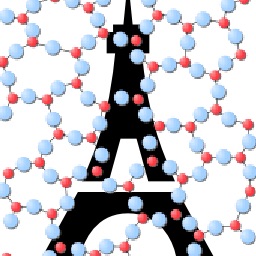On the equivalence of vapor-deposited and melt-quenched glasses
Vapor deposition can yield glasses that are more stable than those obtained by the traditional melt-quenching route. However, it remains unclear whether vapor-deposited glasses are “allowable” or “forbidden,” that is, if they are equivalent to glasses formed by cooling extremely slowly a liquid or if they differ in nature from melt-quenched glasses. Here, based on reactive molecular dynamics simulation of silica glasses, we demonstrate that the allowable or forbidden nature of vapor-deposited glasses depends on the temperature of the substrate and, in turn, is found to be encoded in their medium-range order structure.
